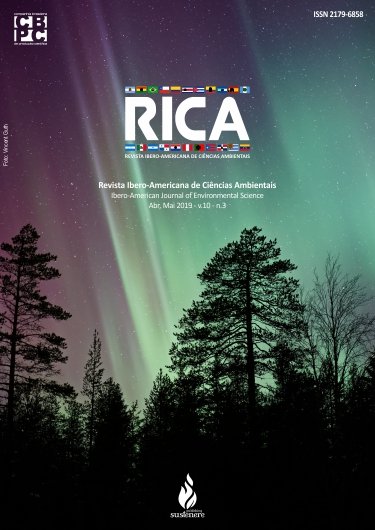Fruit species in the urban arborization of the city of Santarém, Pará
DOI:
https://doi.org/10.6008/CBPC2179-6858.2019.003.0028Keywords:
Food, Avifauna, Urban forestryAbstract
Urban arborization incorporates all activities related to the implantation and management of vegetation present in cities, which may occur in public or private green spaces and provides several social and environmental benefits. The objective of this work was to identify the occurrence of fruit species used in the feeding of humans and avifauna in 4 districts and 11 squares of the municipality of Santarém, Pará, through a total inventory of these areas, considering only individuals with a height equal to or greater than 1.5 m. The Absolute Frequency (Fa) and Relative Frequency of each food species were calculated in relation to the total number of individuals inventoried. Regarding the origin of the species, they were classified as exotic or native. In addition, using the literature review method, characteristics about fruit size and weight were pointed out. A total of 1646 arboreal individuals were recorded, distributed in 63 species of 31 botanical families. A total of 660 individuals were classified as fruiting with human and / or avifauna feeding capacity. Of 22 species belonging to 10 families, Mangueira (Mangifera indica L.), Oitizeiro (Licania tomentosa), Jambeiro (Syzygium malaccense), Castanhola (Terminalia catappa), Cajueiro (Anacardium occidentale) and Goiabeira (Psidium guajava) with the highest number of representatives. In this way, it is possible to affirm that the arborization in the municipality of Santarém is composed of 40.09% of fruit species fed to the population and local bird fauna.
Downloads
Downloads
Published
Issue
Section
License
The CBPC - Companhia Brasileira de Produção Científica (Brazil CNPJ: 11.221.422/0001-03) the material rights of the published works. The rights relate to the publication of the work anywhere in the world, including rights to renewals, expansions and dissemination of the contribution, as well as other subsidiary rights. All electronically published works may subsequently be published in printed collections under the coordination of this company and / or its partners. The authors preserve the copyright, but are not allowed to publish the contribution in another medium, printed or digital, in Portuguese or in translation.









